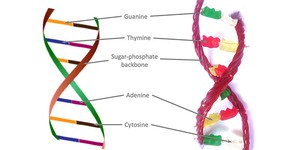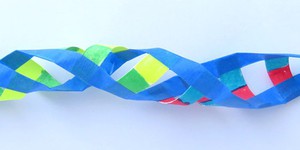Genetics & Genomics Science Experiments (29 results)
Fun science experiments to explore everything from kitchen chemistry to DIY mini drones. Easy to set up and perfect for home or school. Browse the collection and see what you want to try first!
What traits are heritable? How different is your DNA from a frog's, a mouse's or even your relative's? Can your genes tell doctors what is the right dose of a medicine for your body? These are the types of questions scientists are answering with genetics and genomics. By studying individual genes as well as genomes, the whole set of DNA belonging to an organism, scientists hope to get a more complete understanding of how our bodies work and develop better disease treatments.
|
Select a resource
Sort by
|
STEM Activity
193 reviews
Ever wondered how DNA, the genetic blueprint of a life-form, can encode and pass on the information on how to grow and maintain that life-form? Just like a cookbook contains a complete recipe for a dish, DNA stores the recipe for the life of an organism. Although each human has a unique DNA sequence, the DNA in all of us is about 99.9% identical! In this activity, you will use pieces of candy to make a model for a short section of DNA—enough to get a sense of what DNA is like and how it…
Read more
Have you ever looked at two girls and thought they looked so similar that they must be sisters? What about a father and his son — have you ever seen a boy who looked just like how his father did when he was younger? We can often tell that two people are related because they appear to have several similar physical traits. This is because children receive half of their DNA — their genetic blueprints — from each parent. What about fingerprints — are they an inherited trait?…
Read more
STEM Activity
100 reviews
Have you ever wondered why biological siblings look so much alike? Why do they often share physical traits, such as hair color or eye color? It all has to do with their genes. Genes are passed on from parents to their offspring. This means that you share some of the same genes with your biological parents and siblings! In this activity, you will use an alien model to demonstrate how genes or physical traits are passed on from parents to their offspring. How similar will your alien siblings look?
Read more
Some characteristics, like the shape of your hairline or whether your earlobes are attached or detached, are inherited from your parents. In this science project you will see how writing these characteristics onto a family tree can help you determine how they are inherited
Read more
In a survey conducted from 2007 to 2010, the U.S. Centers for Disease Control and Prevention reported that about 49% of people in the United States had taken at least one prescription drug during the past month, and about 22% of people had taken three or more prescription drugs. People are prescribed drugs all the time, but prescriptions can be dangerous because people can have different responses to drugs. These responses largely have to do with genetic mutations. Why are some genetic…
Read more
Our genes are made up of hundreds to millions of building blocks, called DNA nucleotides, and if
just a single nucleotide of DNA becomes mutated it might cause a devastating genetic disease. But
sometimes a mutation actually does no damage. What kinds of mutations have to occur to cause a genetic disease?
In this science project, you will explore online genetic databases to identify how a mutation in a gene
can result in a dysfunctional protein, and how other mutations may have no effect…
Read more
STEM Activity
57 reviews
Ever wondered how DNA, the genetic blueprint of a life-form, can encode and pass on the information on how to grow and maintain that life-form? Just like a cookbook contains a complete recipe for a dish, DNA stores the recipe for the life of an organism. Although each human has a unique DNA sequence, the DNA in all of us is about 99.9% identical! In this activity, you will make a model for a short section of DNA—enough to get a sense of what DNA is like and how it encodes life.
Read more
Can you imagine Valentine's Day or Halloween without chocolate? Well, if you're a chocolate lover
brace yourself for the bad news. According to the United States Department of Agriculture (USDA), "Worldwide
demand for cacao now exceeds production." If there isn't enough cacao, the major raw ingredient for
chocolate, then the chocolate supply will dwindle. Hang on! Before you start rushing to the store to buy
all the chocolate you can get your hands on, a solution is already in the works. In…
Read more
Find out the real explanation for why your parents are so weird! Here is a science project that lets you explore the internet to find out why your "DNA blueprint" is so important to health and disease. In this science project, you will use methods that bioinformatics and biotech scientists perform on a daily basis to decipher the human genome in their efforts to diagnose and treat genetic diseases.
Read more
Believe it or not, scientists were recently able to recover tissue from a 68-million-year-old Tyrannosaurus rex fossil! Not only were they able to purify non-mineralized tissue, but they also succeeded in obtaining partial sequence information for protein molecules in the T. rex tissue. In this genomics science fair project, you will use the T. rex's protein sequence to search sequence databases for the its closest living relatives.
Read more
|














